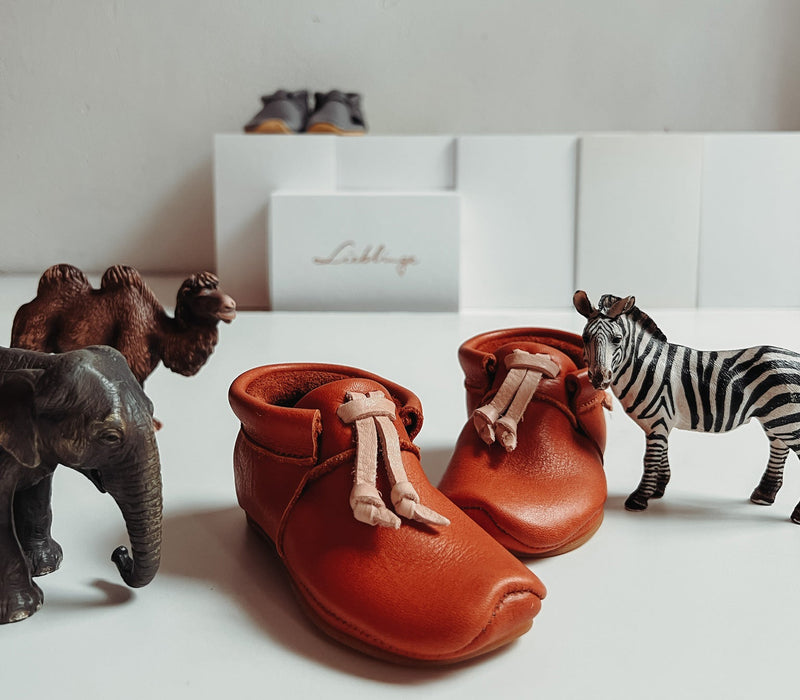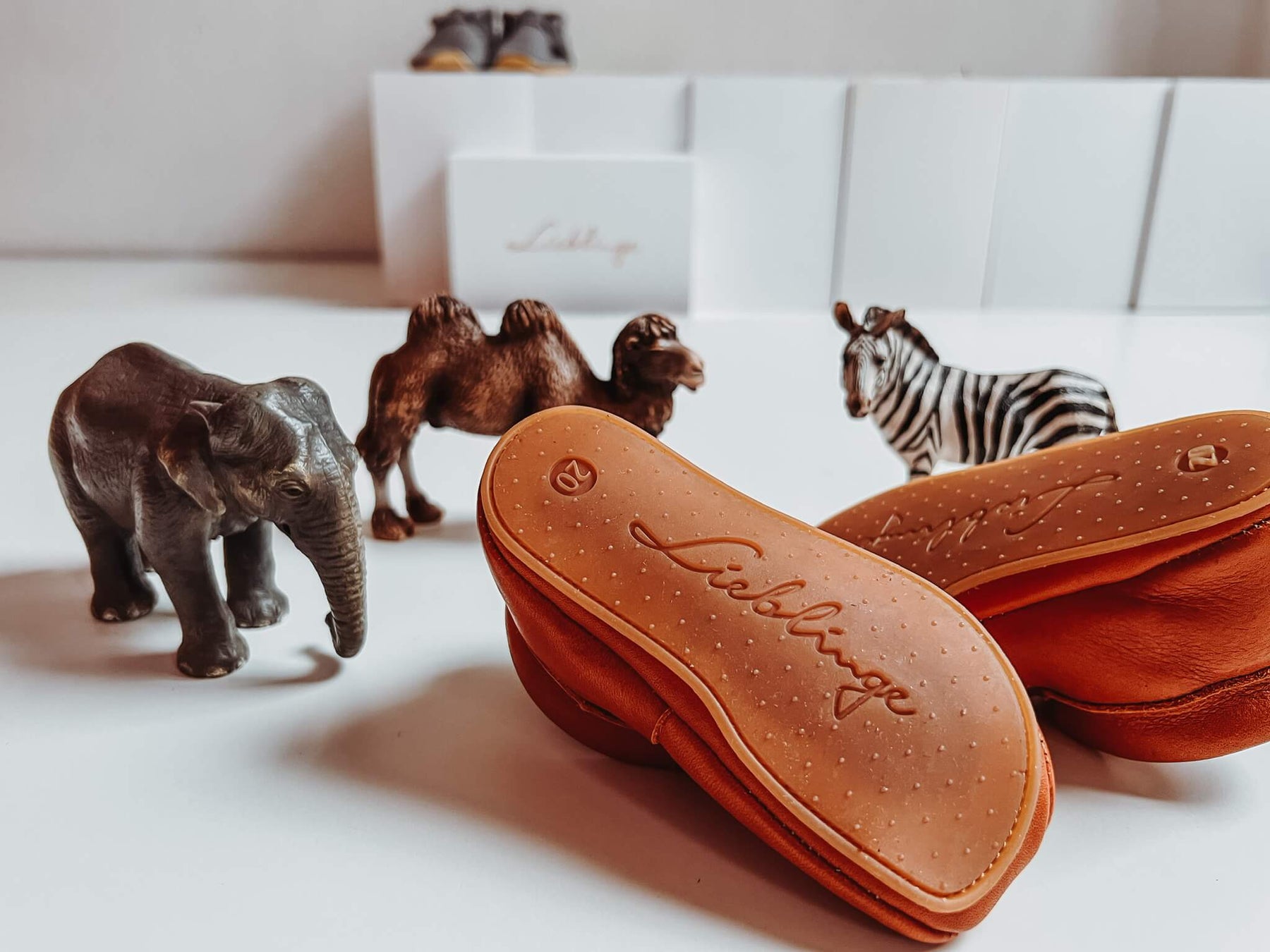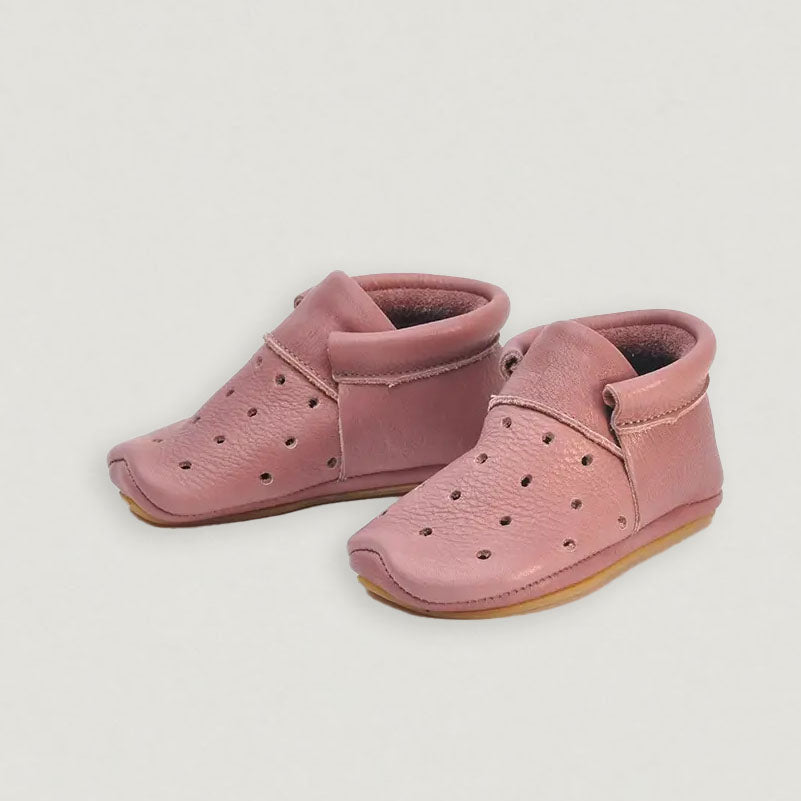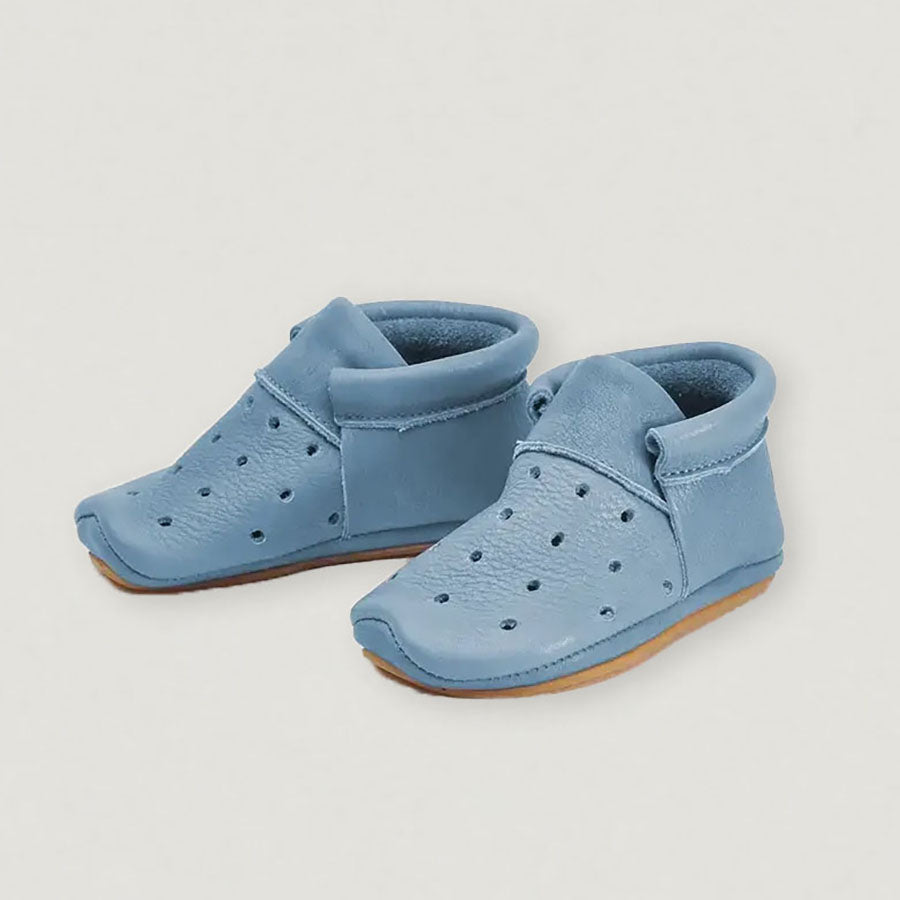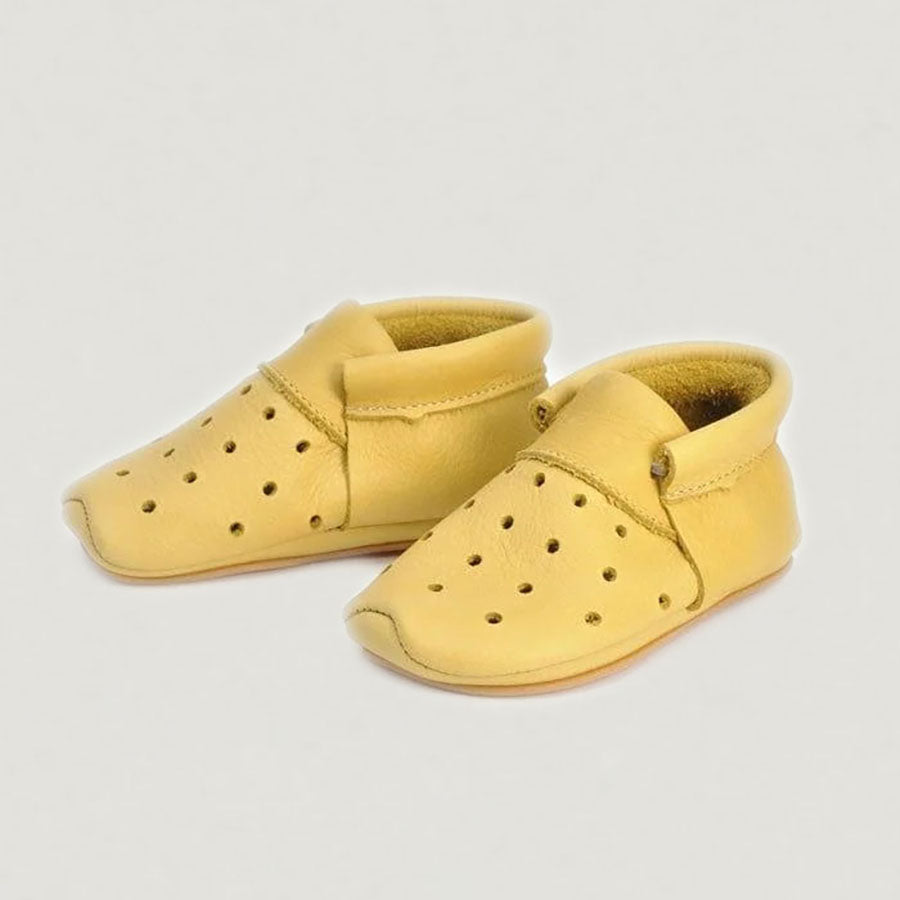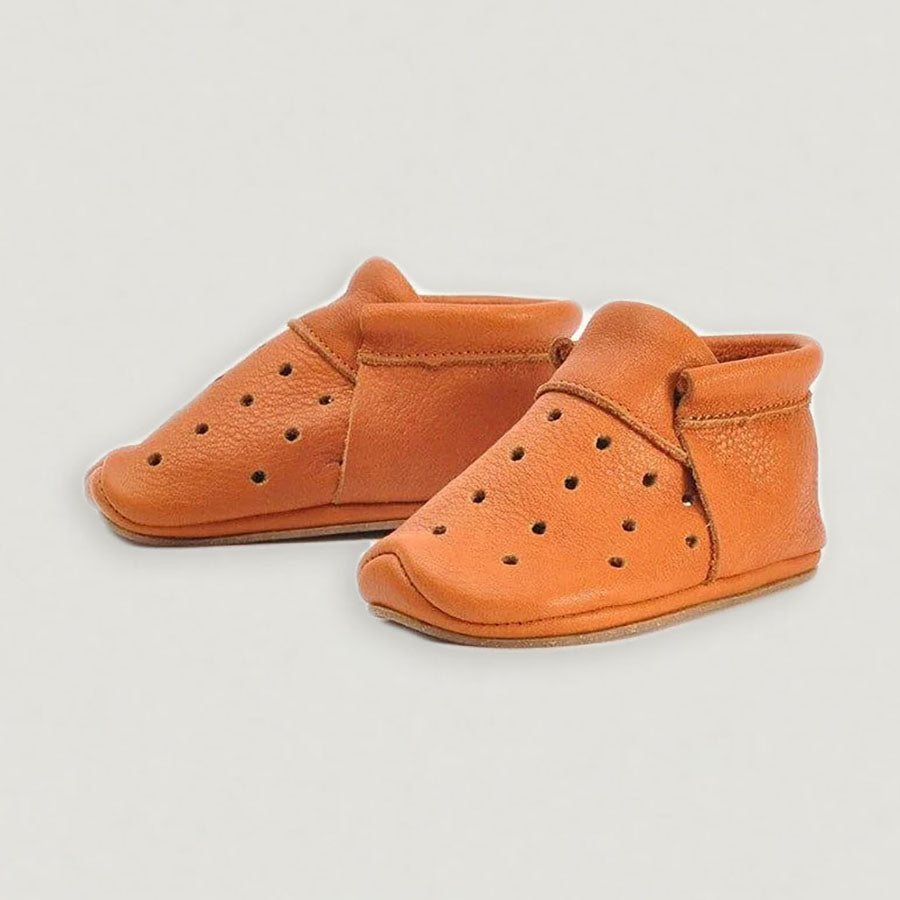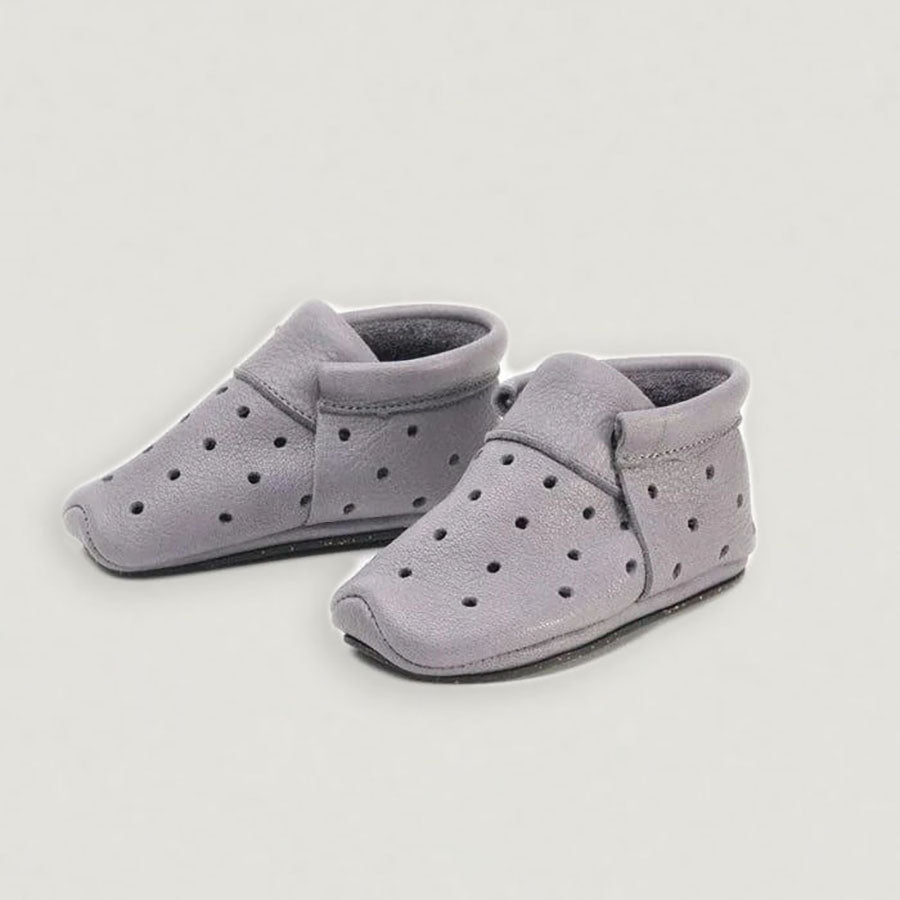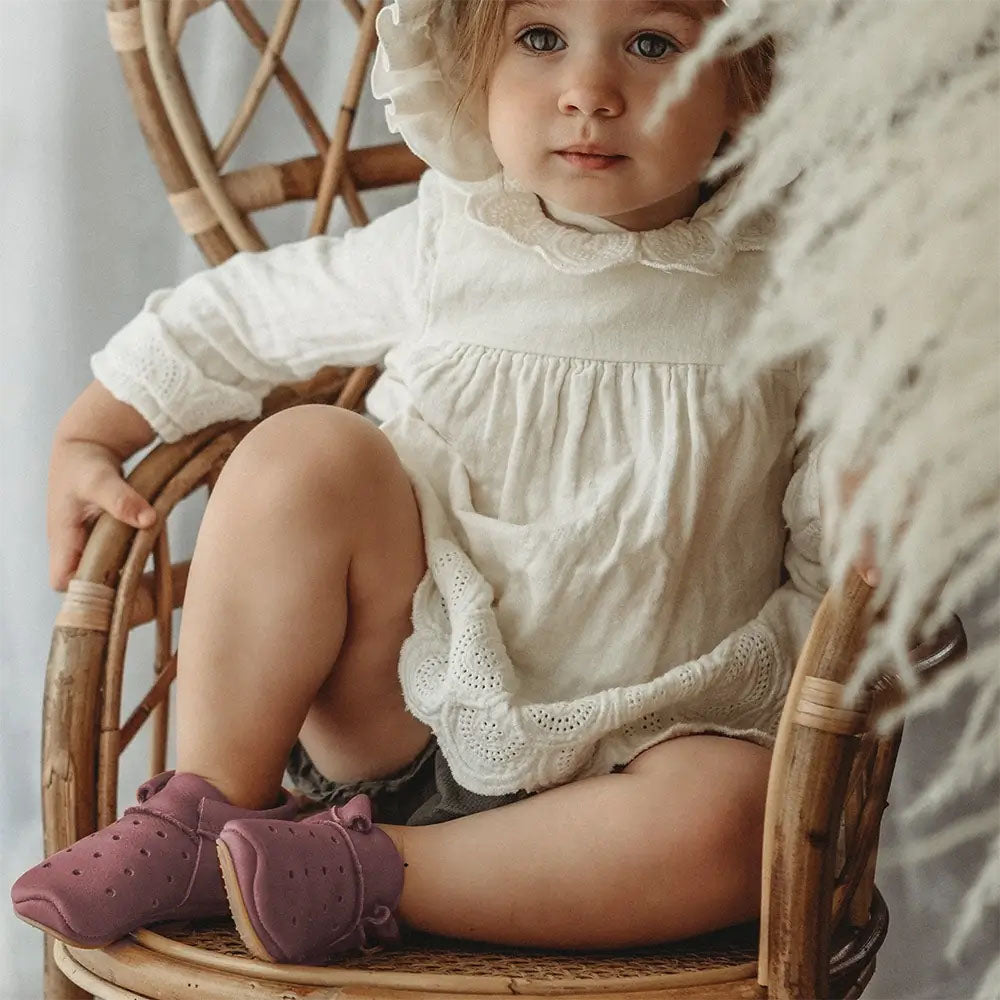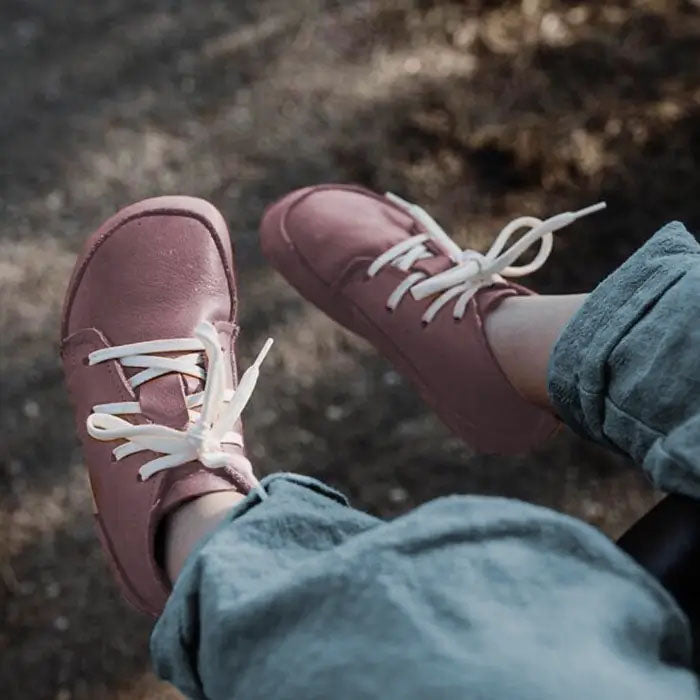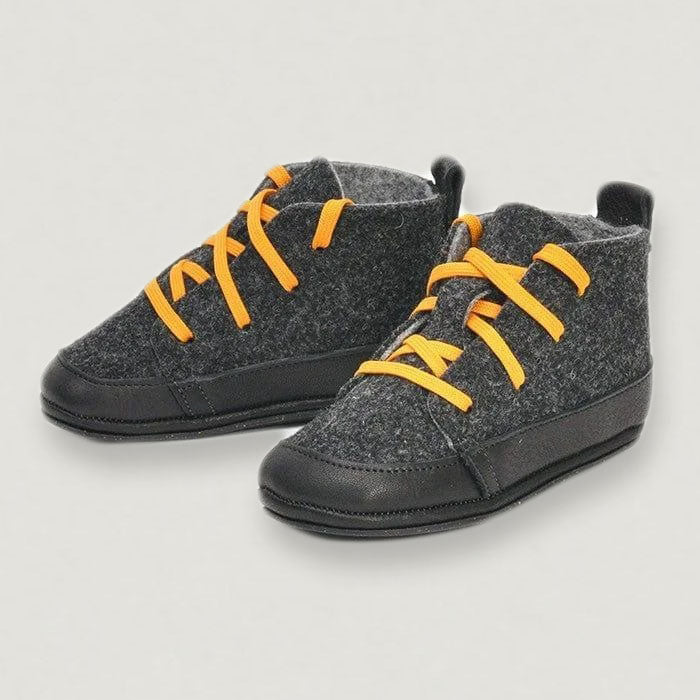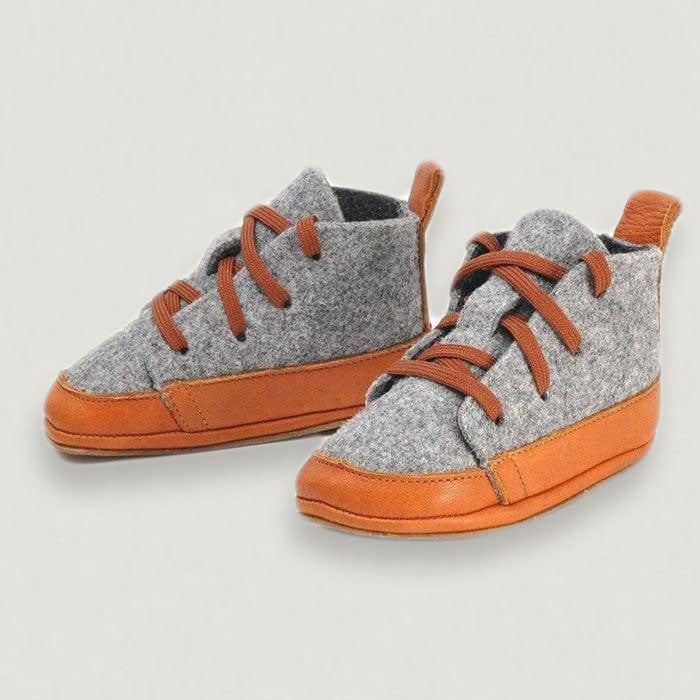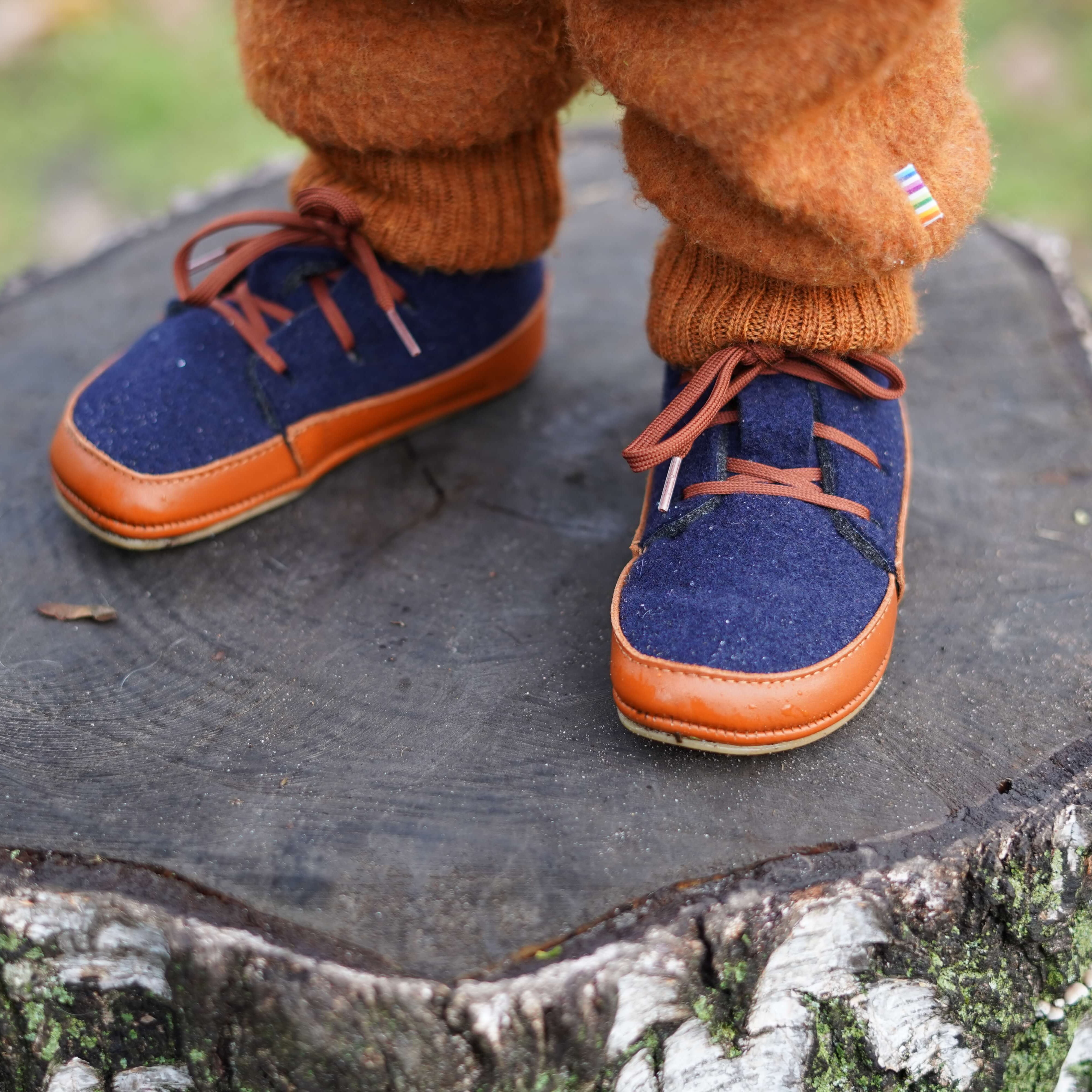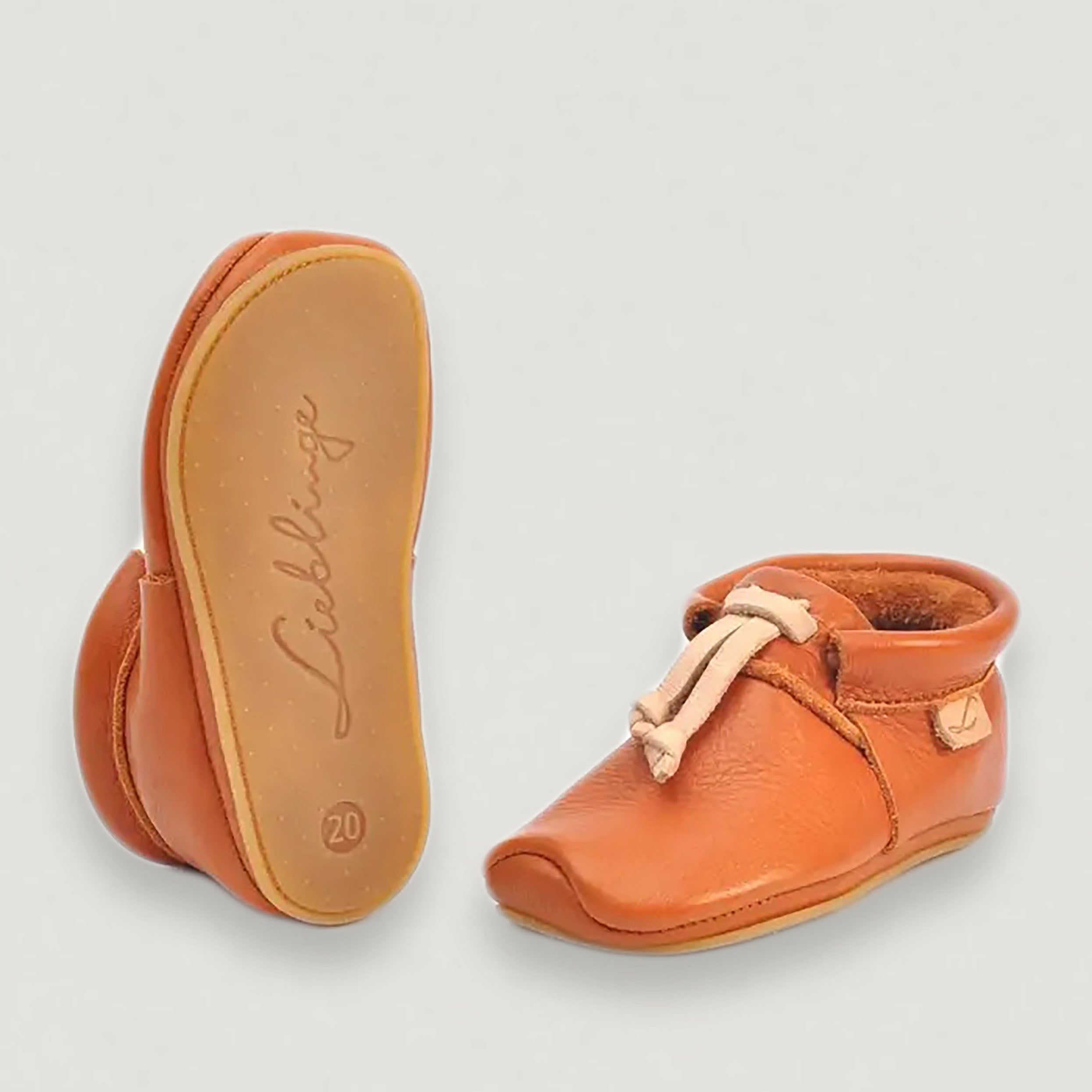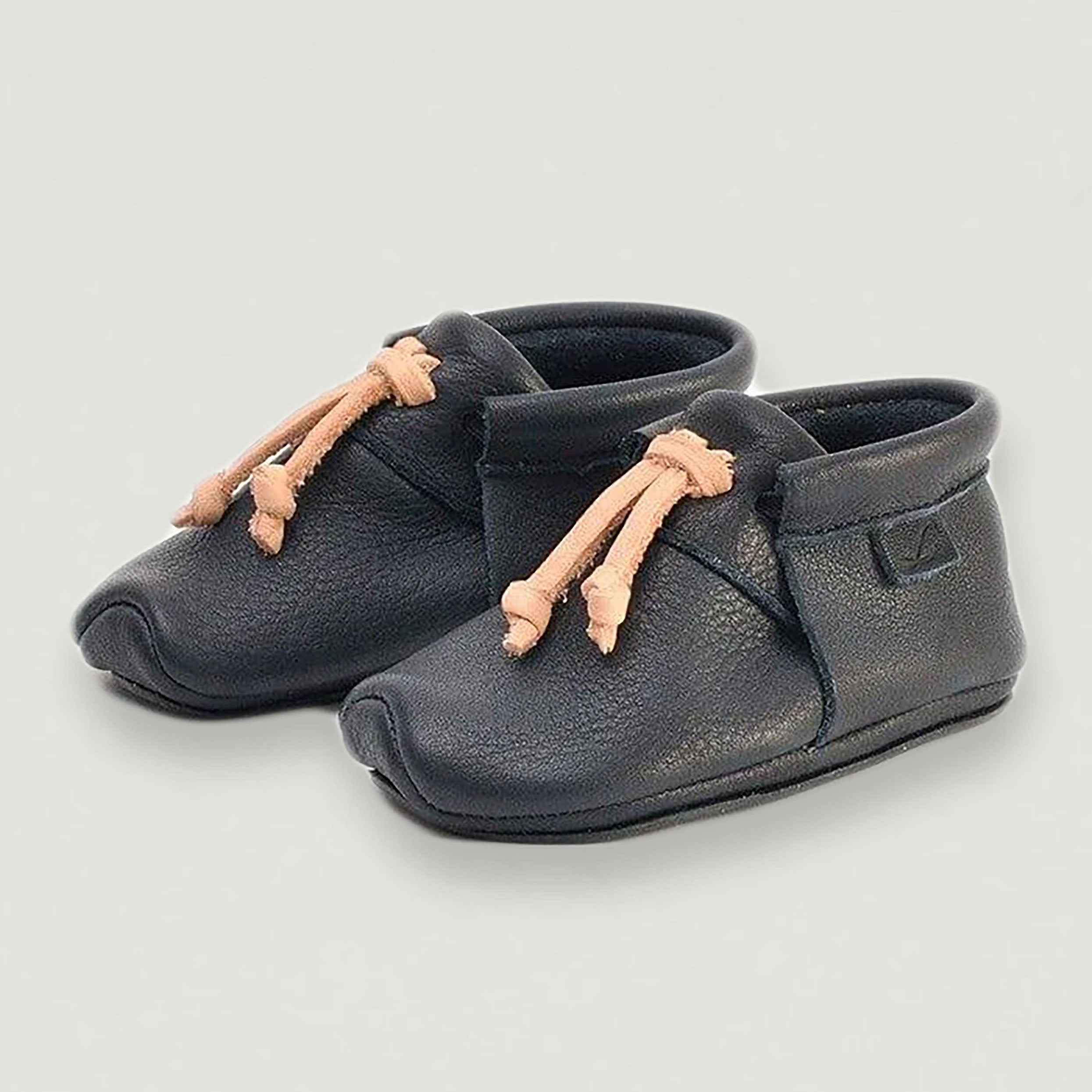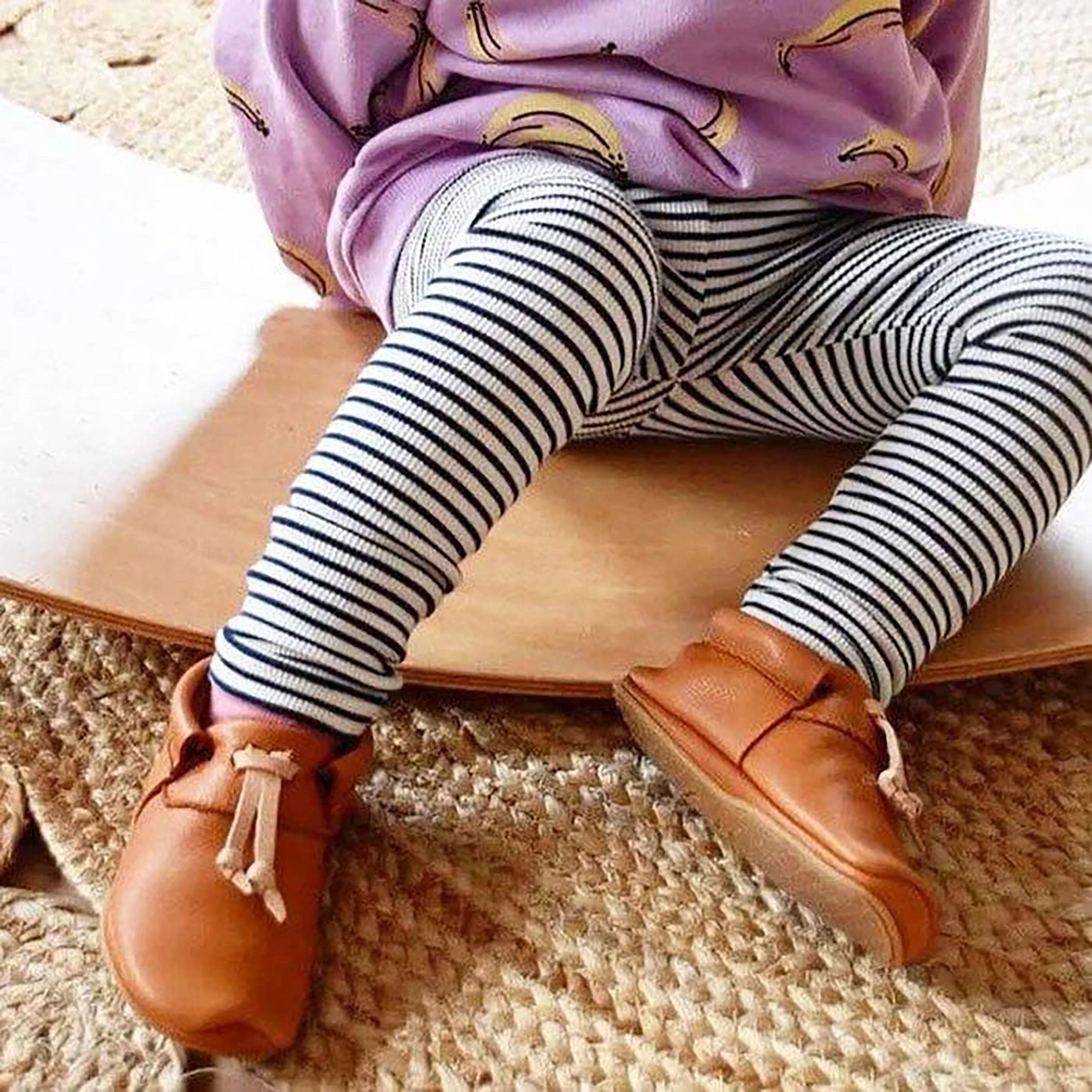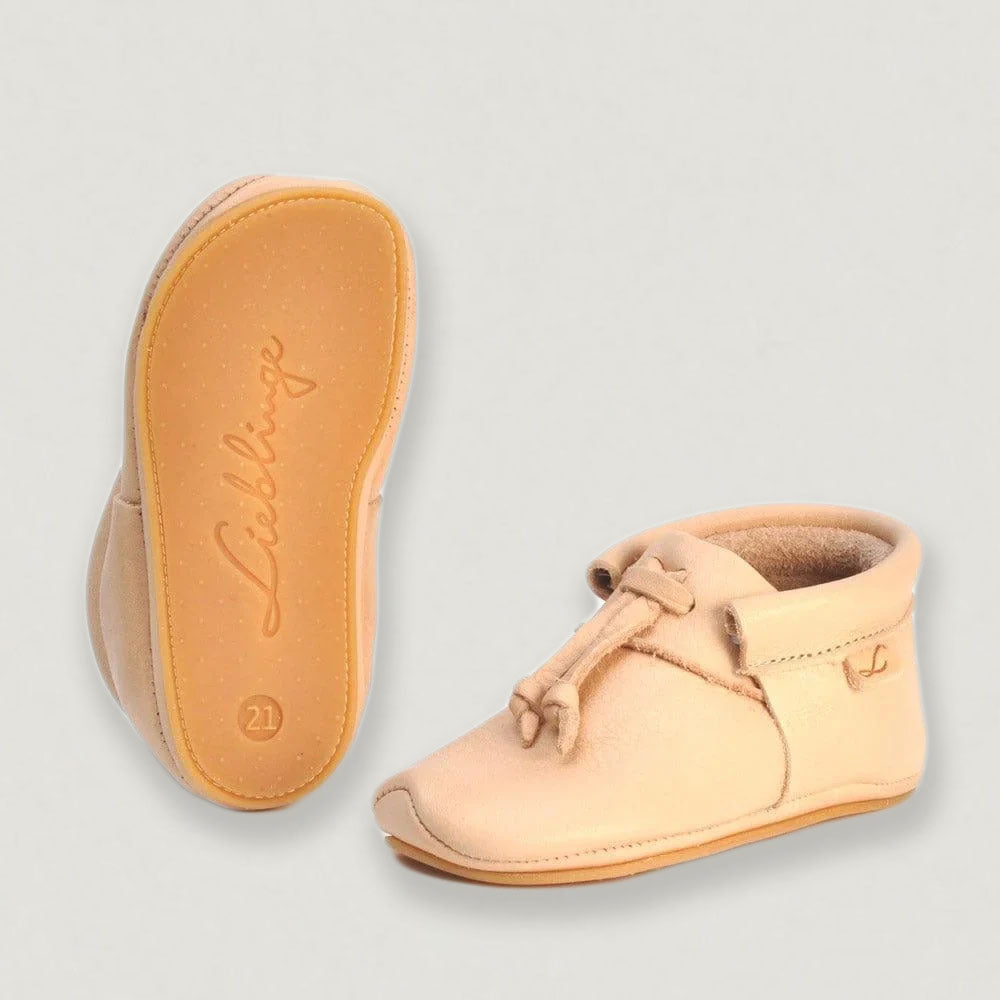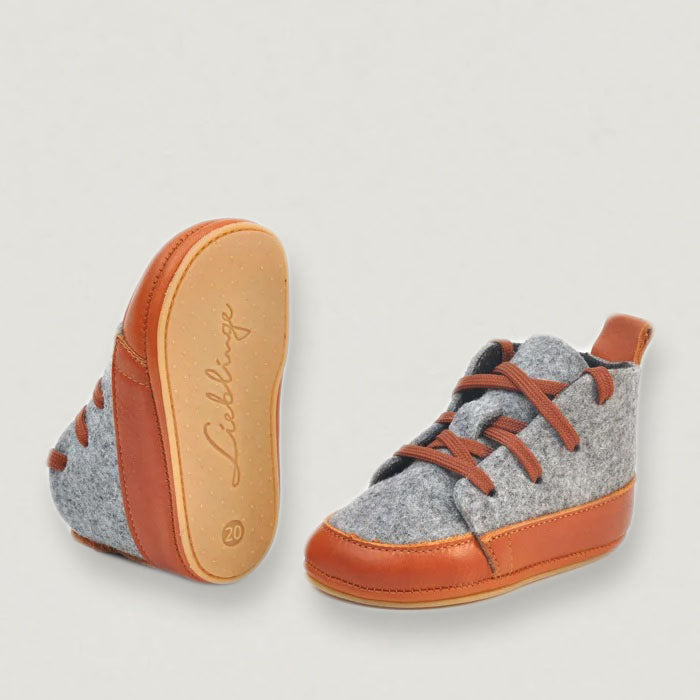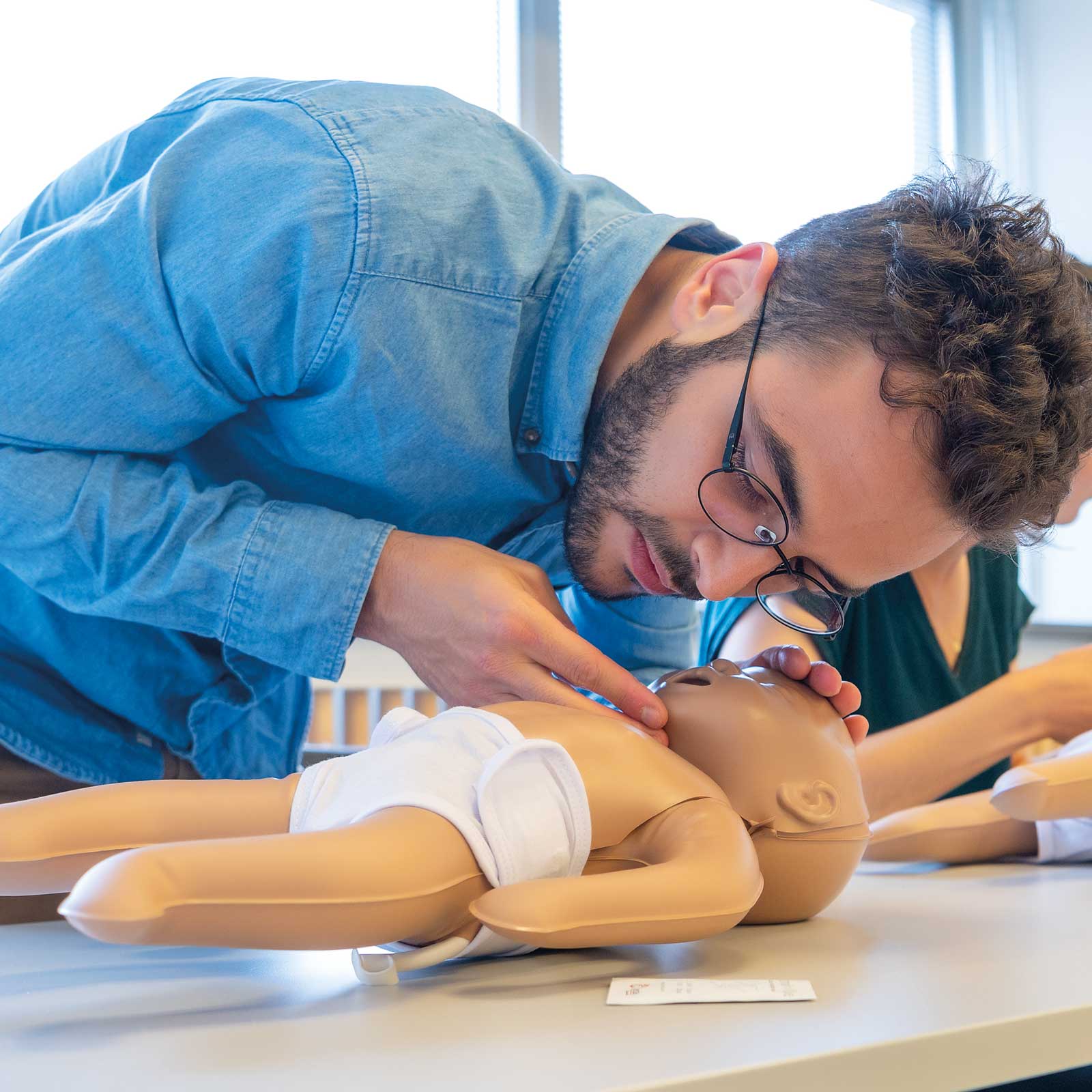interview
How did you decide to found Lieblings?
Nadine Klein: As a master orthopedic shoemaker, I was able to gain a lot of experience in the first 20 years in the field of bespoke shoes and bespoke shoes. Feet & shoes have always been my world - but so far only in the therapeutic pathological area.
That means we have only ever worked with sick and irreversibly damaged feet.
My husband Oliver is a problem solver and shoe freak. As a graduate industrial designer, his skills lie in developing outstanding, clever products that are not only super functional, but also aesthetically pleasing.
In orthopedics, we were able to help people with our expertise and try to create pain-free mobility as best we could, but we were increasingly asked why the majority of adults have foot problems. This ranges from slight pain in the foot area, knees and hips to back pain and headaches. However, these symptoms usually only appear from the age of 35+ and are always associated with poorly developed and thus “collapsed” feet. With healthy and strongly developed feet from the beginning one would be able to avoid all the symptoms. Think of it as a tree with healthy, diversified roots.
The connection between lifelong healthy feet and the right shoes was not at all clear to us at the beginning and only gradually solidified when we accompanied long-term studies and had amazingly good results with our own children.
So in 2013 we founded Lieblinge®, the first brand for real barefoot shoes for children. At its core, it is about prevention and providing the children with the right things from the start so that they can run their course for a lifetime without problems and pain. Based on the experience in the medical field and the expertise that we have acquired over many years have.
Have you had points of contact with barefoot shoes before, especially for children?
Not really for the first few years. At some point the penny dropped because we had treated so many sick and broken feet that something went fundamentally wrong. We were puzzled by the repeating pattern of collapsed feet, and then ensued our journey to realization, which had taken another couple of years.
The fact that barefoot shoes have such a positive influence on the strengthening and sustainable healthy development not only of the foot but of the entire body was only really clear when we were able to completely trace the entire "chain of pain".
From this it was logically deduced that the most important time to invest in feet is in childhood (1-15 years) and that optimal development can only be achieved with shoes that allow the big toes to be in a straight position and strengthening muscles, i.e. barefoot shoes.
What are barefoot shoes and what distinguishes them?
The designation barefoot shoe is not protected, it is not subject to any regulated specifications and can be freely interpreted. Not everything that is called barefoot shoes is really good for our feet. Many parents think that a barefoot shoe is worn without socks and that is why it is called that. Of course that's not true.
Since we come from foot research and orthopedics, we only look at objective, scientifically verifiable facts and draw any conclusions from them. We know from long-term studies exactly how positive walking barefoot has on overall health, but above all on the healthy mobility of children.
A "real" barefoot shoe manages to preserve the natural barefoot experience &. manipulate as little as possible.
To do this, he must have 4 things:
1) Natural foot shape in the toe area -> The big toe stays straight & is not pushed inwards (towards the 2nd toe). Without this anchor position of the big toe, the longitudinal arch is not built up.
2) Flexible, soft and thin sole -> the foot muscles must be stimulated and work so that a foot can become strong and stay healthy.
3) Light weight -> should encourage the children to run unhindered and not be perceived as a foreign body.
4) Ecological materials -> free from harmful substances that are absorbed through the sole of the foot and good sweat absorption capacity
Why do you think barefoot shoes are irreplaceable, especially for babies and toddlers?
In the first 10-15 years, the child's foot is in the most important phase of its development, which determines future foot health. With the little ones, everything in the foot is still very soft and therefore deformable. The initially cartilaginous structure ossifies later. That is why it is so essential that they have shoes on their feet that correspond to the shape of their feet so that nothing is deformed.
On the other hand, there are so many sensors on the soles of the feet that need to be stimulated in order for the muscles to work.
Nothing promotes motor and sensory development as much as walking barefoot, which is why shoes in childhood and later inevitably have to be oriented as closely as possible to walking barefoot.
How does walking in barefoot shoes differ from walking in sturdy shoes or sneakers?
In barefoot shoes, the toes have their natural space and the soles are thin and flexible. The foot muscles are stimulated to work and the arches of the foot are tightened. The weight is optimally distributed. The experience of freedom of movement and ground feeling affects the whole organism and the psyche. Long-term studies prove this impressively.
In conventional shoes with a "fashionable" pointed shape, the big toe is pushed inwards. This permanently prevents the build-up of stable statics. Due to stiff and hard soles, natural rolling is not possible and muscle building does not take place. This unnatural “muscle-passive” gait can be recognized by the typical flopping motion when walking. In the long run, the feet collapse because they do not achieve their intended static position and because they are permanently passive. Typical consequences are: fallen arches or flat feet, and later knee, hip and back pain. Various long-term studies clearly show that wearing such shoes as children later leads to foot damage and poor posture all over the body.
Barefoot shoes have become very popular in recent years, especially for babies and toddlers, which I'm sure you'll be very happy about. Is there something in this development that you are skeptical about?
In general, this is really a very positive development. But as is always the case, there are always brands that discover the trend for themselves and jump on the bandwagon.
Unfortunately, the term barefoot shoe is not protected and there are no specifications as to what a barefoot shoe must be able to do. Parents hope that somehow they will find the right thing that is really good for the child. Unfortunately, many "barefoot shoes" do not meet the important anatomical criteria. That's why it's so important that children's shoes meet all the important criteria of a real barefoot shoe. As a parent, you should really get comprehensive information and only buy a shoe if you are convinced of the expertise and the child walks well in the shoes.
At this point again: wide toe box, straight big toe position, soft, thin & flexible sole & non-toxic materials - then let's go!
What distinguishes favorites?
Our primary concern is the health of the children. We want to help parents understand how important healthy foot development is throughout life and how to achieve it. We dream of a whole generation that no longer has to make the same mistakes that have been the norm up to now. We have painful foot problems in about 70% of the population from a certain age, which could have been prevented so easily.
For us, everything starts with good, individual advice and what the current needs of the child are. Barefoot shoes from Lieblinge are based on the needs of healthy children's feet.
Without exception, we only use the best, certified materials from regional production, because the sole of the foot is the part of the skin on the whole body with the highest absorption capacity of substances and we want to know for sure that nothing harmful is contained. This requires strict controls of all material flows and processing. Here we live full transparency in terms of origin, ingredients and production. We produce everything in our Berlin manufactory with a lot of know-how and craftsmanship.
But I think it's the whole package. There is not only the product here, but also the necessary expertise so that parents know they are on the right track.
What do you wish for the development of Lieblinge in the next 5 years?
We want to make Lieblinge one of the best-known brands for barefoot shoes for children and adults in 5 years. Growing out of their infancy, so to speak. :-)
But the larger sizes (up to size 39) and new collections will come next, because there is such a high demand for them. In this way, our positive impact becomes even greater and even more children can build a foundation on which they can stand and walk healthily and happily for the rest of their lives.
Lieblinge should become the point of contact for parents, where every question about feet is answered and where they get the support and security to do everything right when it comes to the healthy development of their little ones.
How sustainable & fair is the production of barefoot shoes?
To do this, one would have to know under what circumstances the shoes are produced, where the materials used come from and how production takes place. Unfortunately, there is little transparency at this point. Today you have no insight and therefore little possibility of an evaluation. In general, transparency and action based on conviction create trust and as regionally as possible.
We at Lieblinge have a transparent factory in the middle of Berlin. We only work with strictly certified ecological materials, which we, with a few exceptions, obtain directly from owner-managed companies in Germany that we know personally. Completely regional & fairly paid. From development to the finished product, everything takes place under our management in our family business. What we stand with our name. We believe in ecologically and economically sustainable and fair trade for future generations.
Is there something about children's shoes and children's feet that many mistakenly believe?
Yes, unfortunately there are still many misunderstandings here. Here are 3 that you hear again and again:
1) Children need sturdy, stable shoes to learn to walk
That's an old thought from the post-war period. The argument was longevity and conveying the stability that one wanted in the feet.
A fallacy with consequences, because the stability has to come from the foot and not from a passively supporting external construction. Today we know that shoes should be as soft and flexible as possible, actually just a protective shell, because this is the only way to promote muscles and perception.
2) Children's shoes are not that important and also too expensive because the feet grow so quickly
Many parents save at the wrong end here. Yes, the little feet grow quickly in the first years of life and good shoes also cost a few euros more. But the return on this investment is immense. In the first 10-15 years, the "expansion" of the feet takes place. We call it the golden years, laying the foundation for the rest of life. With an average life expectancy of 82 years, this means an investment over 15 years with profit distribution over the remaining 67 years.
It is therefore absolutely smart and profitable to invest in children's feet right from the start.
3) Children's shoes need a footbed and firm soles
Any passive support does not strengthen the feet but causes them to become and remain limp. Passive support is used exclusively in orthopedics, for example when a pain patient with an already collapsed foot who can no longer stabilize himself needs external support in order to be able to regain mobility at all. That's always "plan B" when nothing else works. Children's feet should and are allowed to walk as much as possible without supports so that they can develop strong and healthy. Children's shoes should ideally be flexible and flat so that the muscles are stimulated and work. This is "Plan A".
Lieblinge
The right shoe for every step
The interview demonstrates how important the right shoes are, especially at the beginning. We are big fans of our favorite shoes. Here, you can find the right shoe for every step. Get 5% off now with our code: Babybox5
